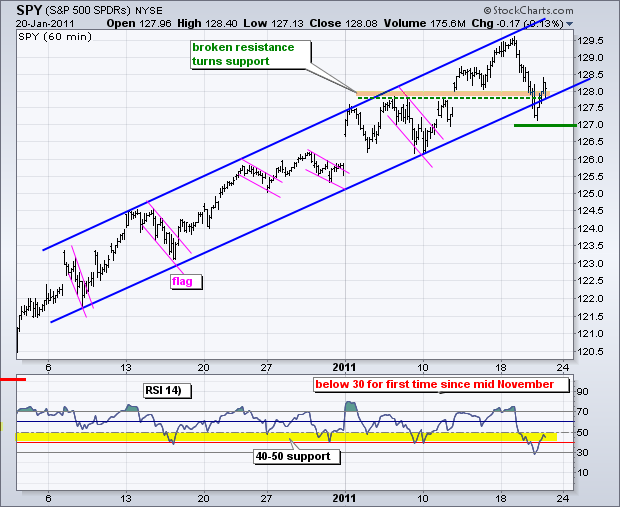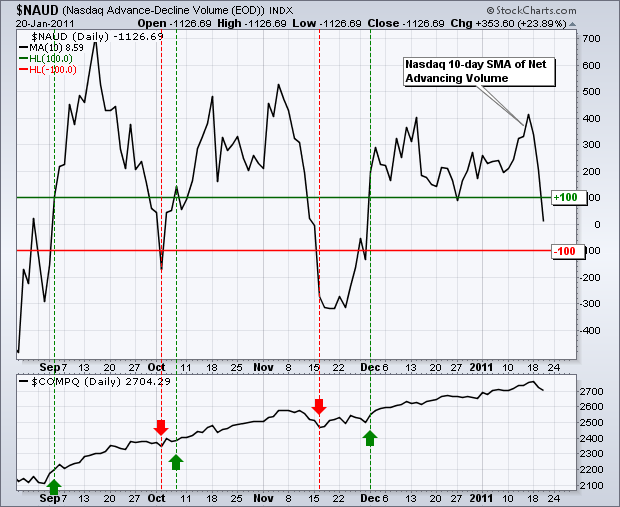On the daily chart, SPY dipped below the lower trendline of the rising channel, but bounced to close back above the trendline. This channel covers the short-term uptrend. The medium-term uptrend is defined by bigger events, namely the break above the November high. This resistance break becomes the first support level to watch on any pullback.
On the 60-minute chart, SPY broke the channel trendline and RSI moved below 30. This is the lowest reading in RSI since mid November, around two months. The channel break and oversold RSI reading reflect the most selling pressure in two months. Despite this dip, the ETF managed to bounce off its low and close above 128. This is probably a harbinger of things to come. Instead of an extended decline or pullback, we may see a choppy trading range evolve for a few weeks.

Breadth weakened again on Thursday with the 10-day SMA of Nasdaq Net Advances moving below -100 for the first time since early December. Nasdaq Net Advances is usually the weakest of the four breadth indicators. The other three are Nasdaq Net Advancing Volume, NYSE Net Advances and NYSE Net Advancing Volume. We are starting to see cracks in the bull as the 10-day SMA for one of these four is now in bear mode. I will turn bearish on breadth if/when three of the four move into bear mode. This means the 10-day SMA moving below -100.


Key Economic Reports:
None on Friday!
Charts of Interest: Tuesday and Thursday in separate post.
-----------------------------------------------------------------------------
This commentary and charts-of-interest are designed to stimulate thinking. This analysis is not a recommendation to buy, sell, hold or sell short any security (stock ETF or otherwise). We all need to think for ourselves when it comes to trading our own accounts. First, it is the only way to really learn. Second, we are the only ones responsible for our decisions. Think of these charts as food for further analysis. Before making a trade, it is important to have a plan. Plan the trade and trade the plan. Among other things, this includes setting a trigger level, a target area and a stop-loss level. It is also important to plan for three possible price movements: advance, decline or sideways. Have a plan for all three scenarios BEFORE making the trade. Consider possible holding times. And finally, look at overall market conditions and sector/industry performance.

About the author:
Arthur Hill, CMT, is the Chief Technical Strategist at TrendInvestorPro.com. Focusing predominantly on US equities and ETFs, his systematic approach of identifying trend, finding signals within the trend, and setting key price levels has made him an esteemed market technician. Arthur has written articles for numerous financial publications including Barrons and Stocks & Commodities Magazine. In addition to his Chartered Market Technician (CMT) designation, he holds an MBA from the Cass Business School at City University in London.
Learn More






